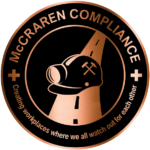What proactive steps can safety managers take to reduce slip-and-fall risks in outdoor areas during freezing rain?

Responding is Bill Coyne, vice president of sales, Winter Walking, Horsham, PA.
Among winter hazards, freezing rain stands apart. Unlike snowfall, which announces itself in a blanket of white, this type of precipitation leaves behind a nearly invisible layer of ice that can turn any outdoor surface into a liability. Parking lots, docks and walkways can become dangerous in a matter of minutes. Waiting until after the ice forms is often too late. Prevention – not reaction – must be the rule.
1. Prepare surfaces in advance
The most effective step is to stop ice from bonding with the ground. This isn’t achieved by luck – it requires strategy.
Forecasts matter. Instead of relying on broad updates, safety managers should turn to detailed, hour-by-hour weather services that flag the onset of freezing rain. Those narrow time windows are the opportunity to act.
Liquids beat solids in this case. Although rock salt works after ice appears, brines and magnesium chloride solutions, sprayed on beforehand, dry into a protective film. When rain freezes, it can’t grip the sprayed pavement as firmly, which makes removal faster and safer.
Drainage is often overlooked. A blocked catch basin or a clogged drain is nothing more than an invitation for water to collect. Once the temperature drops, that standing water becomes a sheet of ice.
2. Manage the event in real time
Preparation isn’t enough on its own. Once freezing rain arrives, management must stay active.
Reapplication is key. Rain dilutes and washes away treatments, so crews should return to entrances, high-traffic lanes and dock aprons repeatedly throughout the event.
Visibility saves people. A-frames, caution tape and cones should be placed where ice is known to form. Digital alerts, sent via email or text, can warn workers before they even step outside.
3. Address the human factor
Surface treatments handle the ground, but people themselves need protection, too.
Proper gear makes the difference. Standard boots alone aren’t enough; slip-on traction cleats, designed for icy conditions, should be required. Employees should be trained on their use.
Briefings keep awareness sharp. Simple reminders – walk slower, shorten steps and keep hands free – can reduce risks significantly when combined with the right equipment.
Freezing rain is deceptive. When it hits the ground, it’s a hazard that can hide in plain sight and creates danger faster than most expect. By layering three defenses – advance treatment, active storm management and employee readiness – safety managers can drastically cut the chances of slip-and-fall incidents while keeping operations moving.
McCraren Compliance offers many opportunities in safety training to help circumvent accidents. Please take a moment to visit our calendar of classes to see what we can do to help your safety measures from training to consulting.
Original article published by Safety+Health an NSC publication


